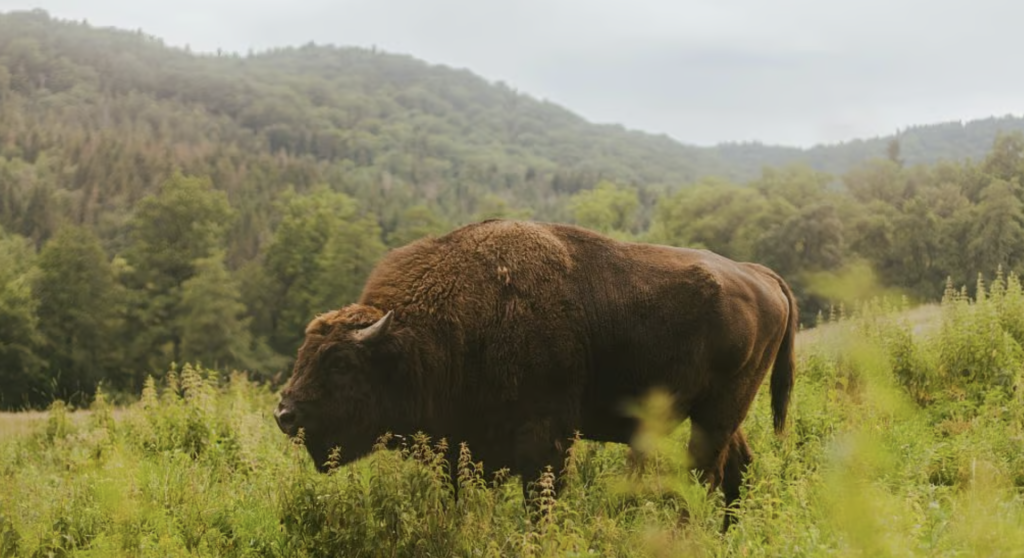
A herd of 170 European bison, recently reintroduced to Romania’s Țarcu Mountains, could play a significant role in capturing CO2 emissions, equivalent to removing 43,000 US cars from the road annually, according to new research awaiting peer review.
The return of the bison
European bison, known for their massive heads and muscular bodies, had been extinct in Romania for over 200 years. However, in 2014, Rewilding Europe and WWF Romania reintroduced these majestic creatures to the southern Carpathian Mountains. The current population stands at around 170 bison, with the region capable of supporting between 350 to 450.
Carbon capture and ecosystem benefits
The study, published in the Journal of Geophysical Research: Biogeosciences, utilized a model to calculate the additional atmospheric CO2 that wildlife, such as bison, help capture and store in soil through their interactions with the ecosystem. In the Țarcu Mountains, the grazing bison, covering nearly 50 square kilometers of grasslands, could potentially sequester an extra 54,000 tonnes of carbon annually—9.8 times more than if they were absent. This carbon capture is comparable to the yearly emissions of approximately 43,000 average US gasoline cars, or 123,000 average European cars, considering their higher fuel efficiency.
The role of bison in combating climate change
Bison grazing helps maintain healthy grasslands, which are efficient at sequestering carbon. Their natural behaviors, such as grazing and seed dispersal, enhance soil health and plant diversity. Professor Oswald Schmitz of the Yale School of the Environment, the lead author of the report, emphasized the ecological benefits of bison.
“Bison influences grassland and forest ecosystems by grazing grasslands evenly, recycling nutrients to fertilize the soil, dispersing seeds to enrich the ecosystem, and compacting the soil to prevent stored carbon from being released,” said Schmitz. “These creatures evolved over millions of years with grassland and forest ecosystems, and their removal, especially where grasslands have been plowed up, has led to the release of vast amounts of carbon. Restoring these ecosystems can bring back balance, and ‘rewilded’ bison are some of the climate heroes that can help achieve this.”
A promising policy option
Schmitz highlighted the potential of this rewilding effort as a significant policy option for climate mitigation. “This really is a policy option with massive potential,” he noted.
As the research progresses toward peer review, the implications of such natural solutions in combating the climate crisis continue to garner attention and support. The return of the European bison to Romania not only restores a vital species to its native habitat but also offers a promising avenue for carbon sequestration and ecosystem restoration.
